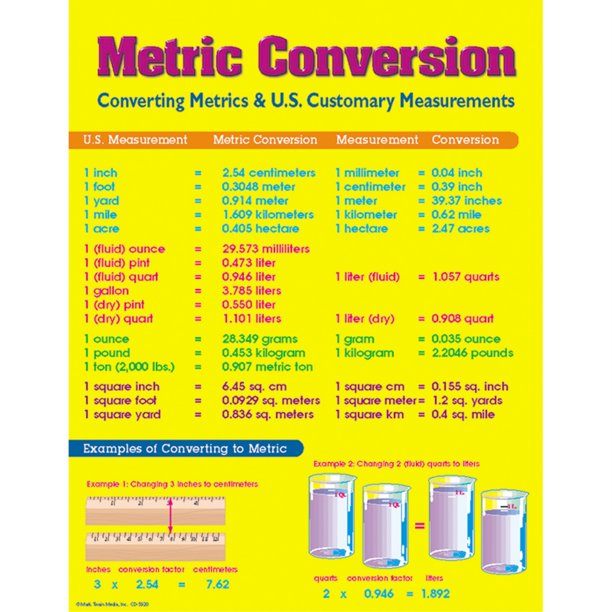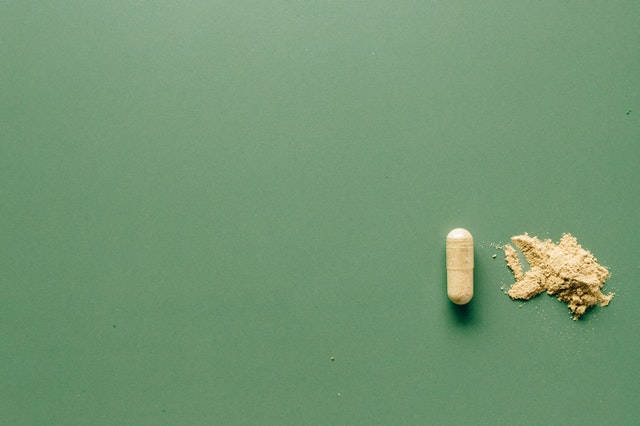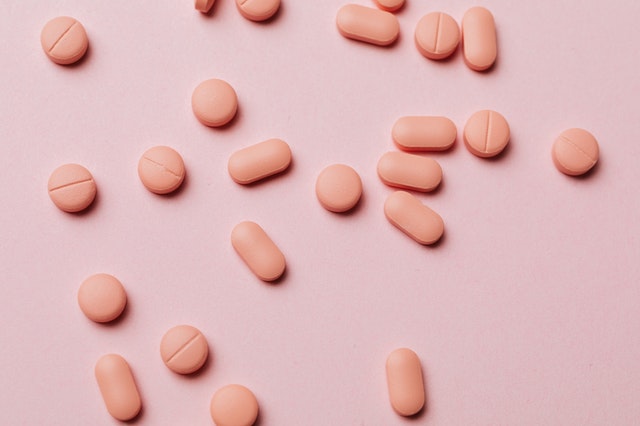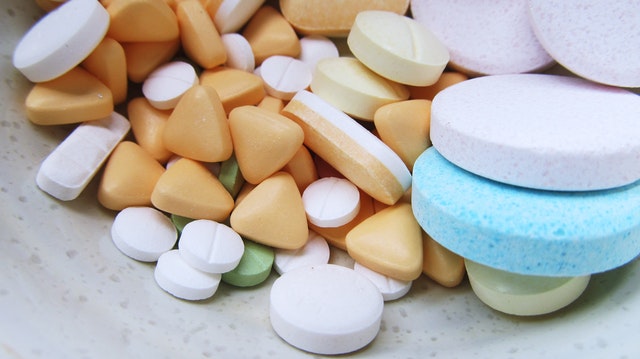In pharmaceutical practice, being able to accurately calculate and measure weight, length, and volume is a must-have ability. These calculations should be performed with confidence by pharmacy technicians who are also familiar with standard measurement unit conversions. Calculating dosages, days supply, and amounts will be a lot easier if you remember these easy pharmaceutical pearls. Conversions will be used on a daily basis regardless of whatever pharmacy environment you work in. In this post, you will get a pharmacy measurements conversions chart that may help you a lot.
Besides, visit our website and take our free PTCE practice test for Math and conversions to get a better understanding of this technique, or download it for your IOS or Android devices now!
A Pharmacy Conversion Process Demo
Consider the following prescription, which is written by a prescriber:
- Latanoprost 0.005% eye drop – 1 drop into each eye nightly
- Dispense: 2.5mL
- 3 Refills
As a technician, you must enter the prescription for processing and give the exact days supply for accuracy and insurance reimbursement. 2.5mL of eye drops does not appear to be a significant volume when you think about it. How can one know how long one bottle will last a patient without knowing the right conversion? In pharmacy practice, guessing is never an option. Simply knowing that 1 mL is equal to about 20 drops will get you to the right answer.
In the bottle of Latanoprost, 20 drops x 2.5mL equals 50 drops total.
25 days = 50 drops/2 total drops in one day
Pharmacy conversion chart you should know
The most common conversions used in pharmacy practice are included in this guide. These should be memorized so that you can do your work quickly and properly. You can print one and have it with you at all times when you want to study.
You’ll have more success in solving conversion problems if you use these simple methods. Again, you can adapt this equation to solve the majority of the conversions you’ll be required to know for the Pharmacy Technician Certification Exam® and while working in a pharmacy.
Many students struggle greatly when attempting to understand the Metric System. To be honest, it’s not as difficult as you may think. We are not concerned with distance in Pharmacological Calculations. However, we will have to be able to convert between volume and weight units.
Below, we will show you pharmacy conversions in detail. Therefore you can understand more about them through examples.
Volume Conversions
Volume is the amount of space that a substance takes up. When we talk about volume, we’re talking about liquid measurement (ex. 5mL).
1 teaspoon = 5 mL
1 tablespoon = 15 mL
1 fluid ounce = 30 mL
1 cup (8 fluid ounce) = 236.5 mL
1 pint (16 fluid ounce) = 473 mL
1 quart (2 pints) = 946 mL
1 gallon (4 quarts) = 3785 mL
When studying these “liquid” conversions, you should use the method of starting at the top and working your way down. Have you noticed how you put 1 teaspoon first? As you progress down the list, the conversion rate usually doubles. Another thing to keep in mind is that tsp (teaspoons) is sometimes mistaken for tbsp (teaspoons) (tablespoon). Make sure you don’t make the same mistake! 1 tbsp (1 tsp) vs. 1 tsp (5 mL) (15 mL).
To make 1 fl. oz., start with 1 tablespoon (15 mL) and double it (30 mL). Begin with 1 c, 1 p, 1 q, and 1 g. Memorize the cup and increase it by two for the pint. Then, for a quart, double the pint. Finally, increase the quart by four to get a gallon (which is actually 3784 but close enough).
Weight Conversions
Weight is defined as a substance’s heaviness of matter. When we talk about weight, we’re talking about solid measurement (ex. 5g).
1 Grain (Gr) = 65 mg
1 ounce = 28.4 g
2.2 lbs = 1 kg
You should be aware that 2.2 lbs equal 1 kilogram. You actually utilize this in every calculation. It’s possible that remembering grain (gr) = 65 mg will be more challenging. It’s an old conversion from back in the day that still shows up now and again. It’s also worth noting that 1 fluid ounce (liquid) is not the same as 1 ounce (weight). 1 ounce Is 28.4 g in this example.
% Volume & % Weight
% w/v = g/100 mL
% v/v = mL/100 mL
% w/w = g/100 g
These calculations must be refined. You may only be asked to know the concentration strength of the most common fluids at times. As an example. NS = 0.9 percent = 0.9 grams per 100 milliliters. D5W = Dextrose 5% = 5 g/100 mL. Remember that the percent stays on top and is converted to grams (if weight) or milliliters (if volume) (liquid). 100 is always at the bottom.
Length
2.5 centimeters = 1 inch
Centigrade/Fahrenheit Conversions
C = (F – 32) X 5/9
F = (C X 9/5) + 32
Aminophylline (A) to Theophylline (T)
5A = 4T
There are different methods for remembering this conversion, but we find that this is the most efficient. To summarize, you should employ dimensional analysis to verify that the two are never confused.
Example: 100 g Aminophylline → Theophylline conversion
80 g Theophylline = 100 g A x 4 T / 5 A Take note of how the A’s cancel each other out (one on top and the other on bottom). You’re left with simply Theophylline.
Specific gravity
SG = g/mL
This conversion is similar to the percent volume, however, there is no percent in this case. So, when you acquire a particular gravity, it’ll always be in grams or milliliters.
Example: What is the specific gravity of material A, which weighs 100 g and is dissolved in 200 mL of liquid?
100 g/200 mL = 0.5 g/mL SG = g/mL
If you’re only given the number SG = 1, that signifies 1 g/mL.
Parts Per Million (PPM)
% ← PPM (4 decimals to the left)
% → PPM (4 decimals to the right)
These conversions might be difficult, but there is a great shortcut to keep in mind. First and foremost, know the values. When using parts per million in a percentage, the formula is 100 (percent)/1,000,000. So, if you divide 100 by 1,000,000, you’ll notice that you’ve lost two zeros and are left with only four zeros. This is the basis of the shortcut.
Remember to think of Beyonce’s Irreplaceable song when you want to get from percent to PPM. The lyrics may remind people to go 4 decimals “to the left to the left” for percent on the left and 4 decimals “to the right to the right” for PPM on the right. You’ll never forget it, even if it’s crazy.
Parts Per Billion (PPB) → (7 decimal places)
The concept is the same, except instead of four decimal places, you move 7.
Ratio
(100 / %) = 1: X
(100 / X) = %
Many people are confused by these sorts of questions. When you first hear these, you may be confused, and they aren’t the best way to show a drug’s strength. Whatever the case may be, you must be aware of it.
When you’re asked to convert a number to a percent in this form, all you have to do is divide 100 by the specified percent.
Convert 5% into 1:X form, for example.
1:2,000 = [100 / (5/100)]. Before dividing by 100, remember to convert the percent to decimal form.
If you require a percentage, simply repeat the process with the figure provided.
Convert 1:500 to percent form (100/500) = 0.2 percent as an example. Keep in mind that this equals 0.2 g/100 mL. The units must be the same else the formula will not work.
Calcium
Ca² Carbonate = 40% Elemental Calcium
Ca² Citrate = 21% Elemental Calcium
Finally, even the best-prepared people are fooled by these kinds of questions, which appear to be simple but are actually rather difficult!
You have 150 milligrams of calcium carbonate, for example. How many 100 mg calcium citrate tablets are required to provide the same precise amount of elemental calcium?
You’re thinking to yourself, “Wait, what?” Although it’s simple to recall that carbonate is 40% elemental calcium and citrate is 21%, many people have struggled to understand this conversion. I completely understand; it’s quite confusing. Here’s how I went about doing it.
What is the importance of this for a pharmacy conversion?

Although the pharmacist performs the final check on every prescription and drug order, it is critical that both the pharmacist and the technician are well of the above information. The pharmacist relies on the technician to do calculations with few or no mistakes in order for the pharmacy to operate efficiently. If a pharmacist needs to correct an improper dose or day’s supply on many prescriptions, it would not only slow down workflow but might potentially damage patients if not identified before dispensing.
Do your research and become familiar with the pharmacy conversion chart. Not only will you be pleased, but so will the pharmacist you work with and the patients you treat. Always remember that guessing is never an answer. The key is to be prepared, to practice thoroughly, and to memorize these conversions.
Besides, knowing these pharmacy conversion charts also helps you to raise your professional level, which in turn helps you to improve your salary. Let’s find out more about the average salary of pharmacists to have more motivation to study and work.
[Sassy_Social_Share]
Pharmacy Sig Codes: All Medical and pharmacy abbreviations You Should Know
It is critical to understand and retain pharmacy sig codes. We've included a master list of these abbreviations in this blog.
January 1, 2022

List Of Drug Suffixes And Meaning
In this article, we give you the way to remember the top 200 drugs easier with drug suffixes and meaning. Let’s get started!
January 1, 2022

Top 200 Drugs Every Pharmacist Should Remember [2024 Updated]
Let's look at the top 200 drugs list, each of which includes a list of all active chemicals as well as the drug class to which each ingredient belongs.
January 1, 2022

